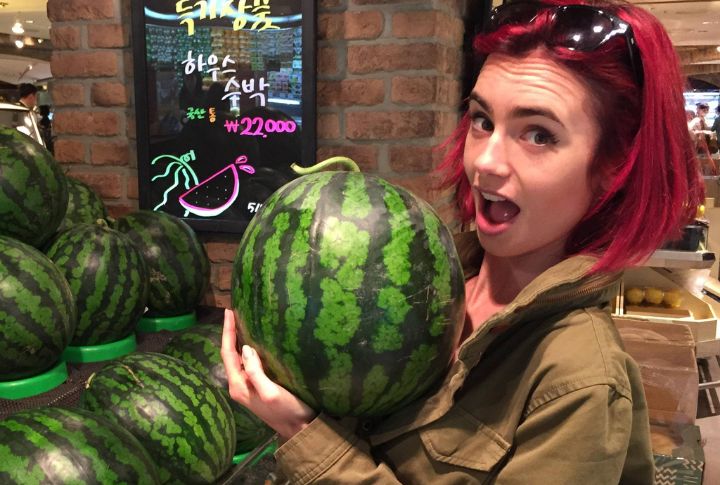
Finding that sweet, juicy gem can be daunting amid a wide selection of watermelons. Instead of playing roulette in choosing the right one, you can have a secret weapon for picking the perfect watermelon every single time. Read on as we share these 15 expert tips to turn you into a pro.
Check the Field Spot
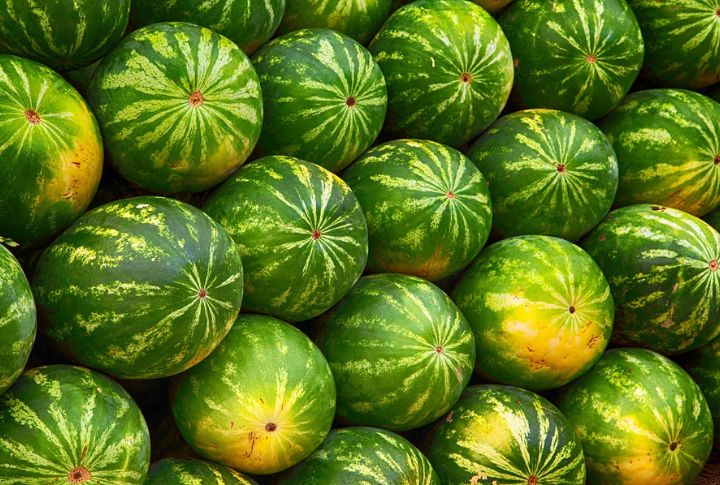
Look for the creamy yellow spot where the melon sat on the ground. Ripe melons typically have large, dark yellow field spots, indicating they spent ample time maturing on the vine. The darker the yellow, the longer it ripened, which usually suggests a sweeter and juicier fruit.
Examine the Skin
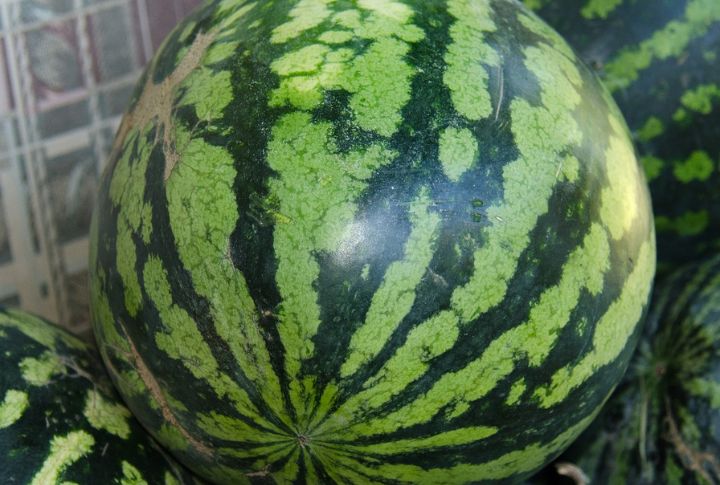
The rind should be dull and not shiny. A glossy watermelon may indicate under-ripeness, while dullness shows that the fruit has reached its peak ripeness. Additionally, the skin should be hard and resistant to scratches, as this toughness indicates maturity.
Feel the Weight

It should feel heavy for its size, indicating it’s full of water and thus ripe. Compare the weight of several melons of the same size; the heaviest will likely be the ripest and most water-filled.
Tap for Sound
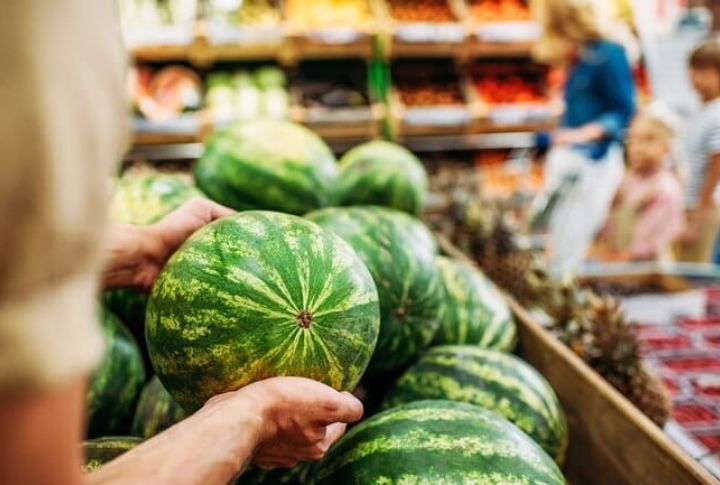
Give the watermelon a good tap with your knuckles. When ripe, it will produce a deep, hollow sound, while an unripe one will sound dull. This resonance indicates the water content and density, a key marker of ripeness and juiciness.
Inspect the Shape
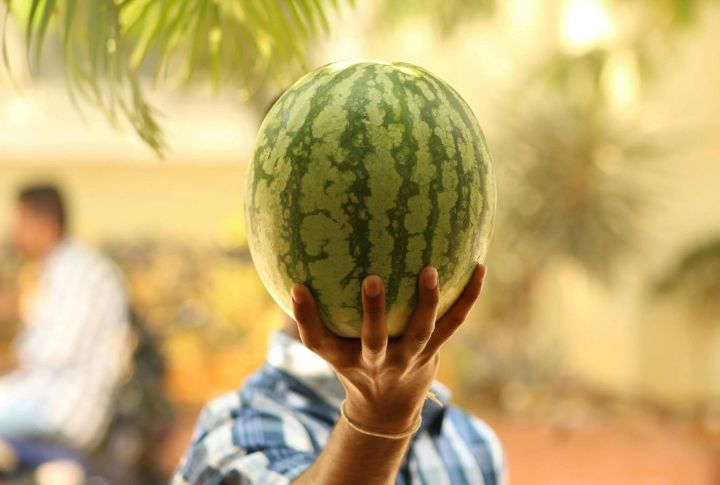
Choose a watermelon that is uniform in shape, whether round or oval. Irregularities may signal uneven growth, affecting the quality inside. Uniformly shaped melons have consistent texture and flavor throughout the fruit.
Check for Sugar Spots
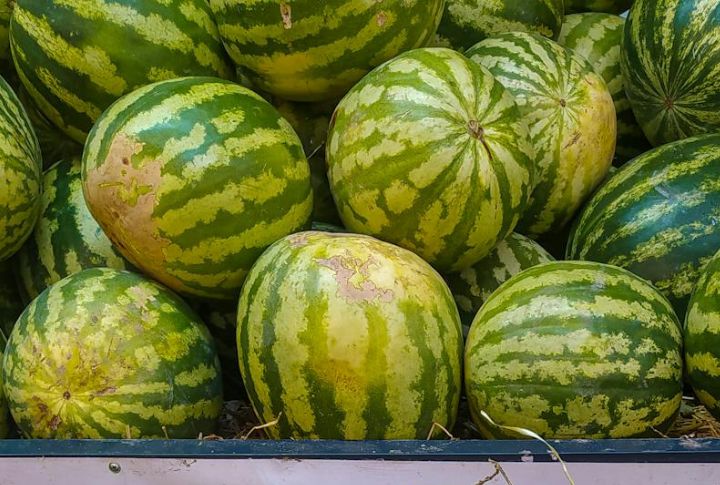
You should look for small, brown, rough patches known as sugar spots. These spots indicate where sugar seeps out, suggesting a sweet, ripe melon. Some might think these spots are imperfections, but they are actually signs of high sugar content and a deliciously sweet fruit.
Observe the Color

A ripe watermelon typically has a consistent, deep green color. Avoid melons with white streaks or those that are too light. The darker the green, the more time it has had to mature and develop its flavors fully.
Press the Skin
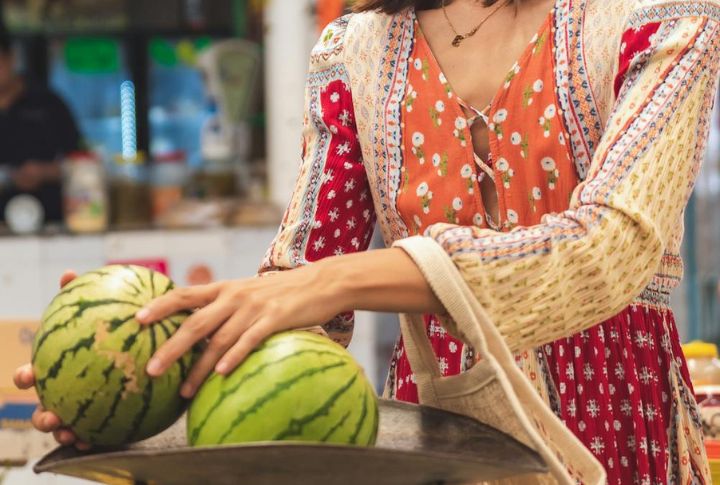
Gently press the skin of the pick with your fingers. It should be firm and resist pressure. A soft one may be overripe or spoiled. If the skin gives too much, the fruit inside might be mushy and past its prime.
Check the Stem
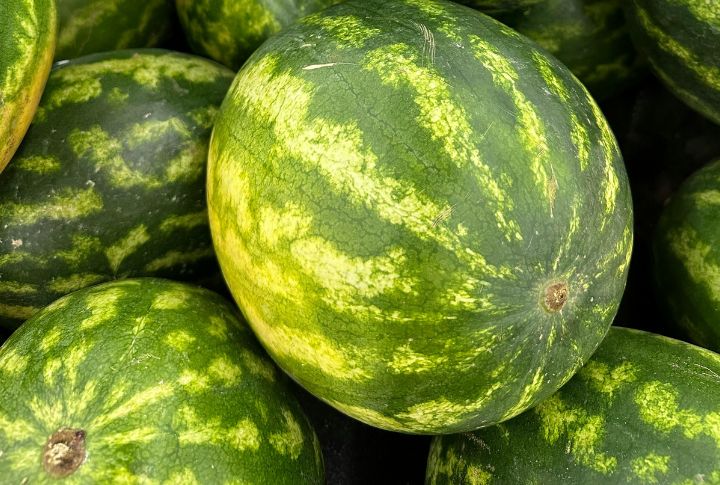
Stems indicate the state of watermelons. Brown, dry stems show “sweetness,” and green stems suggest the watermelon was picked before its time.
Smell the Watermelon
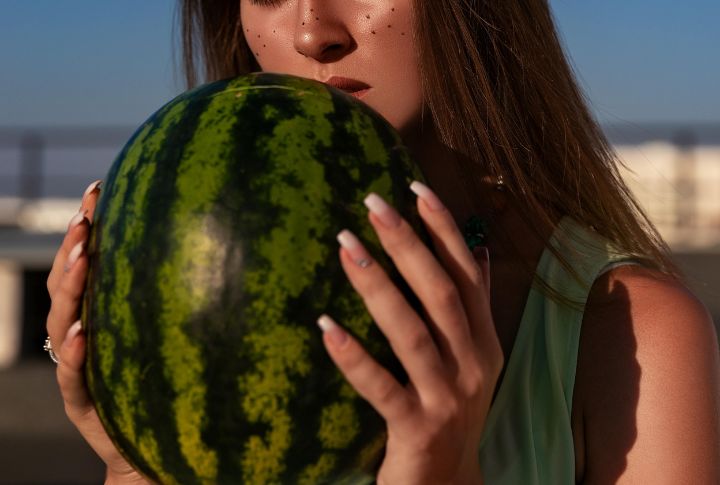
Although less common, some people recommend smelling the watermelon. Sweet fragrance can be a sign of ripeness. The method benefits those with a keen sense of smell and can be a reliable indicator of the fruit’s internal sweetness.
Look for Bee Stings
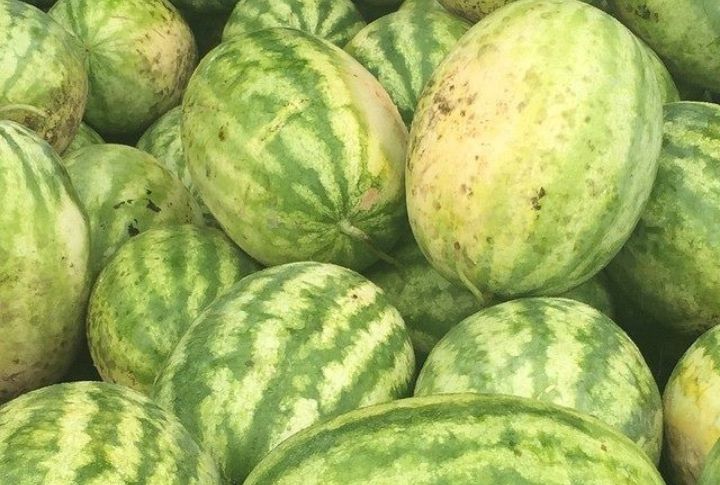
Small, dark spots or lines on the rind can be bee stings, indicating the bees were attracted to the sugar inside. This is a good sign of sweetness. Bees are drawn to the sugars that seep from the fruit, signaling a high sugar content and a ripe, flavorful melon.
Examine the Underside
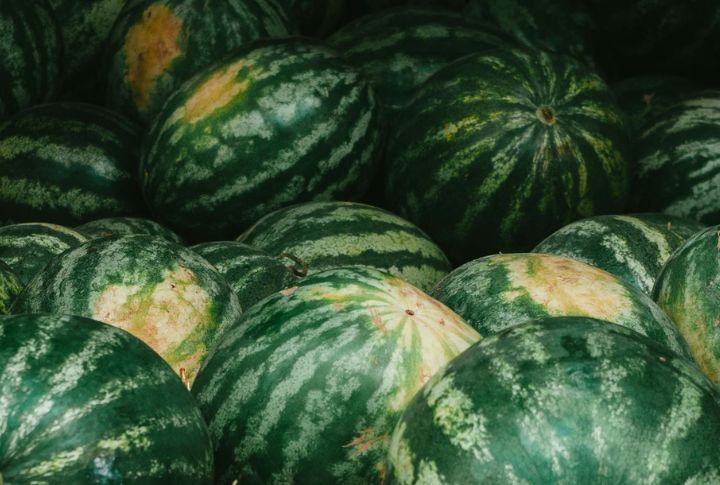
Turn the melon over and look at the underside. It should be creamy yellow or orangish, not white or green. It is where the watermelon sat as it ripened, and the color change indicates full maturity.
Look for a Consistent Pattern
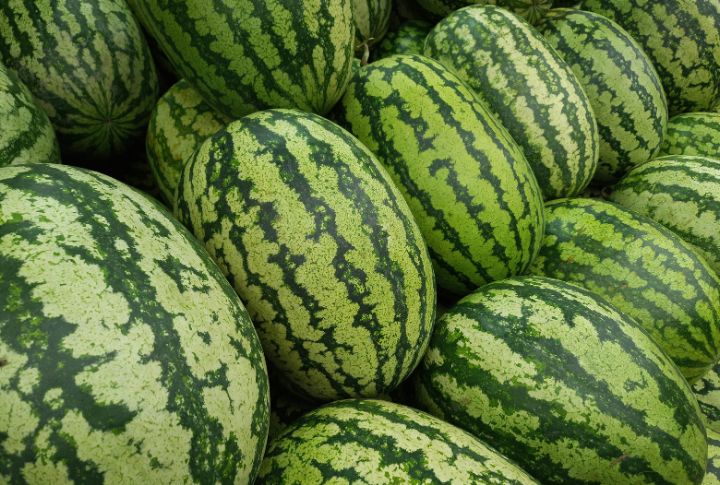
Inconsistent patterns may indicate poor quality. In addition, a well-defined pattern indicates healthy growth and development. The stripes or patterns on the melon should be uniform and well-defined.
Test Multiple Signs
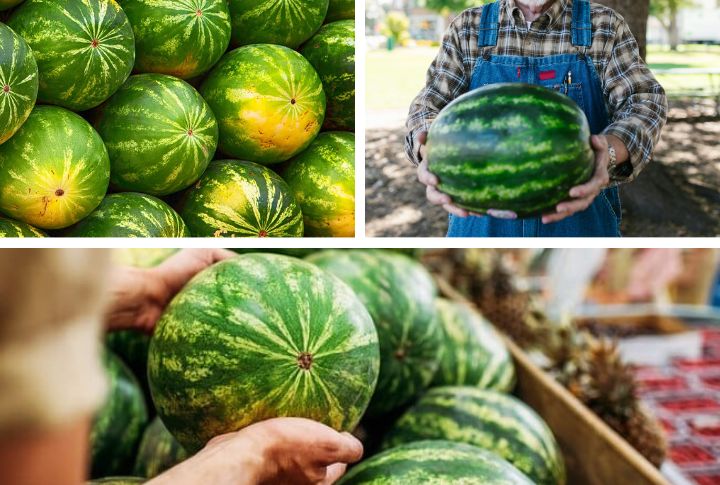
Don’t rely on just one indicator. Combine several tips, such as checking the field spot, weight, and sound, to ensure you pick the best watermelon. You are more likely to select a perfect fruit when you confirm signs of ripeness.
Consider the Season
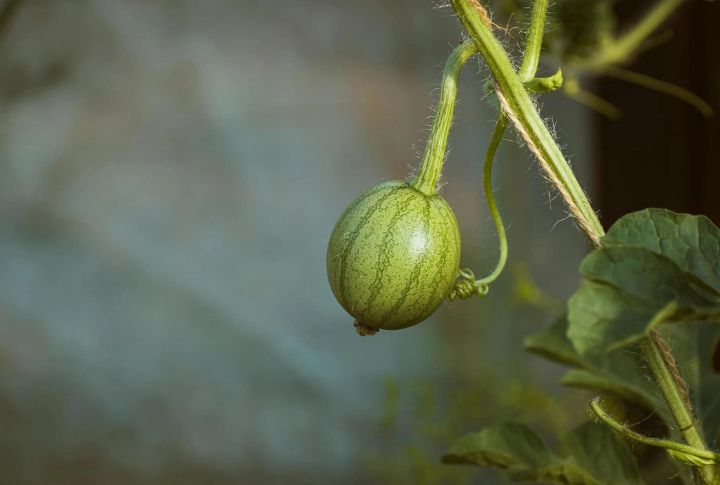
Melons are in season during the summer. Buying them then increases the likelihood of finding a perfectly ripe and flavorful watermelon. Seasonal fruits are fresher and more likely to have been harvested at peak ripeness.


Comments
Loading…